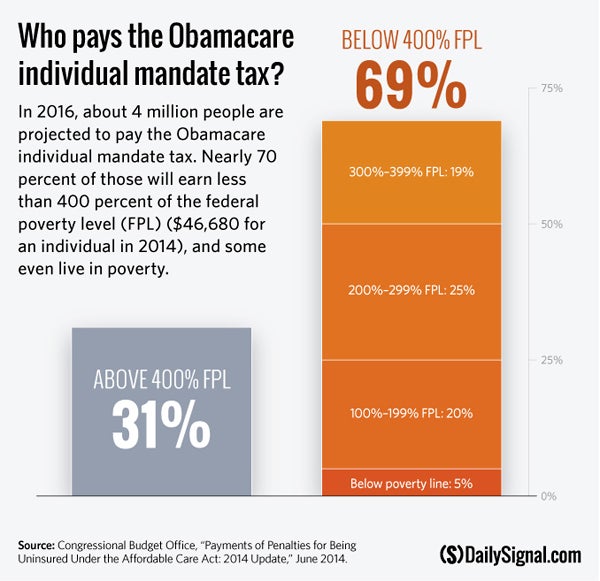As Americans begin to file their 2014 taxes, they will encounter some new forms and paper work, thanks to burdens imposed by Obamacare’s flawed policies.
First, taxpayers now must report their health insurance coverage status and that of their dependents.
Those who were uninsured in 2014 either must file for one of the individual mandate’s exemptions if they are eligible or pay the mandate penalty of $95 or 1 percent of income, whichever is greater. The penalty grows in 2015 and 2016 to the greater of $325 or 2 percent of income and $695 or 2.5 percent of income, respectively.
Second, when those who received Obamacare’s premium tax credits in 2014 enrolled in coverage, the amount of their credit was calculated based on their estimated income for the year. For most enrollees, those credits were then paid in advance to their insurer each month, who subtracted that amount before billing them for the balance of their premium.
Now, as part of their tax return, those individuals will have to calculate what their correct premium tax credit should have been based on their actual 2014 income and reconcile the amount of credit they actually received in 2014 with what they should have received.
They will need to do that on Form 8962—a new two-page, 36-line tax form (accompanied by a 15-page set of instructions containing three additional worksheets)—which they then must attach to their Form 1040. But to fill out Form 8962, they first will need to receive from the exchange their copy of Form 1095-A providing the information they need to complete Form 8962.
If a tax credit recipient’s income fluctuates, which happens more frequently than many realize, the subsidy amount changes from month to month based on an individual’s eligibility.
Those whose income decreased throughout the year and thus qualify for a higher premium tax credit than initially determined receive a tax refund for the difference. Those whose income increased but whose subsidy remained unchanged will be required to repay the excess subsidy.
Repayment of the excess subsidy is capped for those earning less than 400 percent of the federal poverty level. For those who earn less than 200 percent of the federal poverty level, repayment is capped at $300 for individuals and $600 for families.
For those between 200 percent and 300 percent of the federal poverty level, individuals are capped at $750 and families at $1,500. And for those who earn more than 300 percent of FPL, but less than 400 percent, repayments are capped at $1,250 for an individual and $2,500 for a family.
Enrollees who phase out of premium tax credit eligibility altogether (incomes above 400 percent FPL) will be required to repay the entire Obamacare subsidy they received.
Thus, if subsidized Obamacare exchange enrollees didn’t report increases in their income throughout the year, they could be responsible for repaying the IRS substantial amounts of money.
Both the individual mandate penalties and tax credit repayments are likely to upset and potentially surprise consumers—and surely can be expected to add to the law’s continued unpopularity among Americans.































